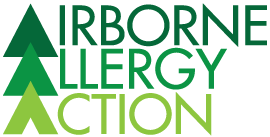
Welcome to Airborne Allergy Action
We are parents and long term asthmatics raising awareness of the benefits of improved indoor air quality and effective airborne (inhalant) allergen avoidance for allergies to dust mites, mould, tree/grass pollen, cat/dog dander (alongside prescribed medication).
Studies have shown that these methods can promote good respiratory health, reduce the risk of respiratory infections and, in some circumstances, reduce the risk of hospitalisations. We also raise awareness of the presence of these allergens and pollutants in public places such as schools, hotels etc where children, in particular, spend large amounts of time. We encourage these establishments to use appropriate cleaning methods to remove these allergens and pollutants.
In January 2020 the RCPCH Report into the Effects of Indoor Air Quality on Child Health found that improving indoor air quality helps to promote good respiratory health and can reduce the risk of respiratory infections. The Working Party specifically recommended inhaled allergen avoidance for allergic illnesses such as asthma and allergic rhinitis. The NICE guidance on indoor air quality made similar recommendations.
We know how confusing it can be to work out which avoidance methods work effectively in practice. Our own experiences of improving our indoor air quality and allergen avoidance as well as our work with indoor air quality experts have highlighted to us how this can be achieved in the most effective ways. We have already shown many others how to replicate our results. Read our testimonial page for some examples of this.
“Medication is not the only way to control asthma. It is also important to avoid asthma triggers – stimuli that irritate and inflame the airways. With medical support, each asthma patient must learn what triggers he or she should avoid.”
WHO factsheet 307 May 2011
